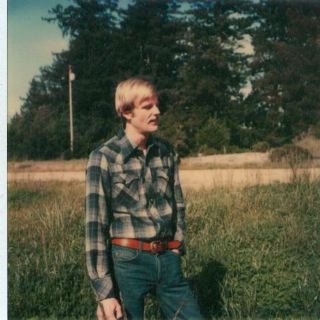Does anyone know what happened to Richard’s 8-Foot Square Hollow Mahogany Pyramid? Last seen at the famous “Worm Farm” in San Greogrio.
From far-off Chicago, Richard Ledford says:
Hi June,
You have assembled one of the more special websites that I have ever had the pleasure of stumbling upon by accident –halfmoonbaymemories.com
Thanks for putting such meticulous devotion into making something both beautiful and freely shared!
I e-mail you now to ask whether you know, or know of anyone who does know, anything about an 8-foot square hollow plywood pyramid appearing at the Worm Farm in San Gregorio around spring of 1975?
This exact proportional replica of the Great Pyramid was carefully built by me and left with the people living at the worm farm at that time. I am interested in learning what use this pyramid served, and what was its fate over the intervening years. If you, or someone to whom you can forward this message, could send me any information available on this subject, I would greatly appreciate the effort.
-All the best, thanks.
———–
HI Richard:
I was happy to read such an upbeat email message first thing in the morning., I have a number of posts about the great magician Channing Pollock, owner of the unforgettable Worm Farm.
Did you draw the plans for the pyramid water tank? Because I have some architectural plans for it. Here is the link, click here
POST (peninsula open space trust) bought the Worm Ranch from the heirs of Channing and Corri Pollock, who originally purchased the land from Stanford.
Here is the link to POST, click here
George Cattermole and his wife own the Store in San Gregorio and they are certainly up-to-date on what is going on in their “front yard.” The water tank pyramid, if that is what you are referring to, stood just up the road from their store.
Here’s the link to the San Gregorio Store, click here
Was this helpful?
————–
Hi June,
Good to hear from you so soon.
I have just one PIC of the pyramid from my days at the last avacado ranch in Yorba Linda, where I crafted it. As soon as I can scan it, I will send it to you.
The name Channing Pollock rings a bell. It was likely by his magic I was drawn to leaving my pyramid at the worm farm – for no particular or clear reason of having any prior relationship with anyone there -as if he pulled me straight there through the aether, straight to San Gregorio bearing my gift of a precision wooden pyramid.
I did not draw the plans for the water tank pyramid, but I did hear something of this project somehow. Perhaps at the Saturday morning Alan Chadwick organic gardening sessions held at UCSC back then. This may be why I considered the worm farm a good place to leave my pyramid as I left for Chicago. I had previously been living on Skyline Blvd. as the caretaker of the property know as Rancho Diablo, while it was still run by the Portola Institute (Whole Earth Catalog) to hold 20-25 people, 2&3-day educational seminars in the big mansion.
Richard Ledford (Armadillo)


